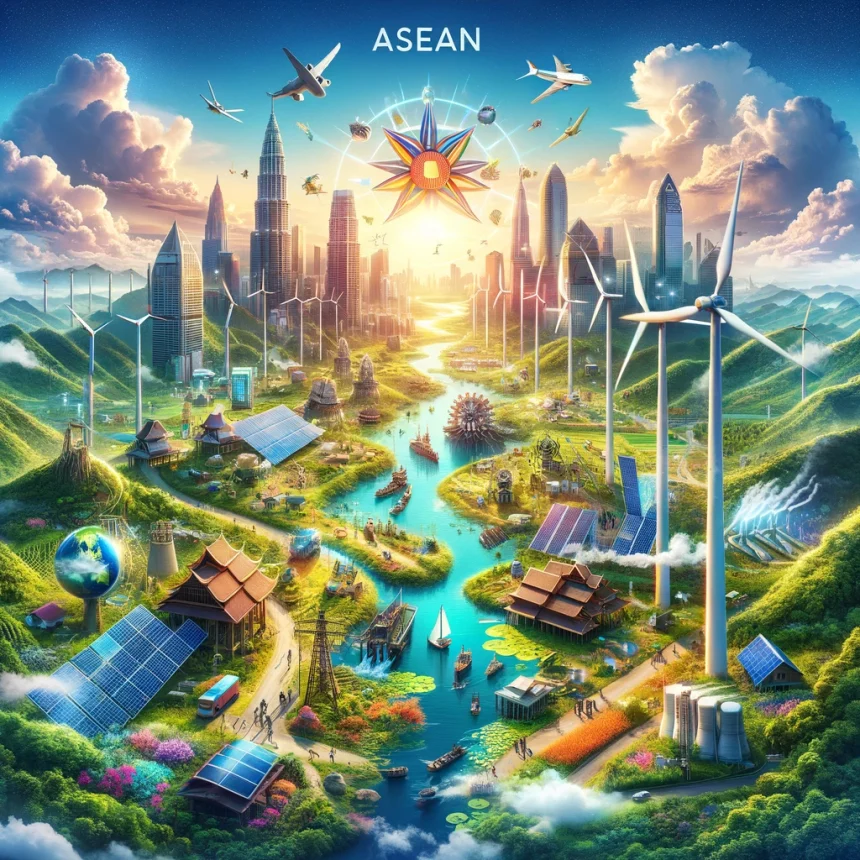The recent commitment by ASEAN countries to triple their renewable energy output by 2030 is a significant stride towards environmental sustainability. This pledge reflects a united front against the pressing global environmental crises, particularly climate change. However, this ambitious goal raises critical discussions about its viability across the ASEAN member states, each with its own distinct environmental, economic, and infrastructural backdrop.
The Renewable Energy Paradigm
Renewable energy, with its spectrum ranging from solar and wind to hydroelectric sources, stands as a beacon of hope for environmental conservation. This shift from fossil fuels aims to slash greenhouse gas emissions, bolster energy independence, and catalyze economic growth through emerging green sectors. Moreover, the environmental perks of renewable sources, including minimized air and water contamination, promise a leap toward healthier ecosystems and societies.
The ASEAN Mosaic: Varied Challenges
The ASEAN collective is characterized by its rich diversity, spanning from affluent urban centers like Singapore to burgeoning nations such as Myanmar and Laos. This diversity extends to their natural endowments, demographic densities, and economic frameworks, influencing each country’s ability to embrace and benefit from renewable technologies.
For nations grappling with high population densities or limited territorial expanses, the deployment of expansive solar arrays or wind farms presents substantial hurdles. Additionally, the steep initial costs associated with renewable infrastructure can pose formidable challenges for economically disadvantaged members, potentially straining national finances and diverting attention from other pivotal developmental sectors.
Tailoring Renewable Strategies
The overarching aim to triple renewable energy generation, albeit laudable in its ambition, might overlook the intricate requirements and potential of individual ASEAN nations. The adoption and scaling of renewable energy must be informed by factors such as national energy needs, existing infrastructural assets, and geographic predispositions. For instance, countries endowed with significant hydroelectric potential may prioritize this avenue, while coastal nations might lean towards harnessing wind energy.
Forging Ahead: Adaptive Strategies and Synergies
The realization of ASEAN’s renewable aspirations necessitates an adaptable and collaborative ethos. Member states stand to gain from crafting customized energy blueprints that resonate with their unique landscapes and challenges. This could entail a diversified focus on renewable modalities best suited to each nation’s geography and the establishment of interconnected regional grids to facilitate energy sharing.
The role of international alliances and financial backing from global entities is pivotal in smoothing the transition towards renewable energy, offering the essential fiscal and technical scaffolding to leapfrog into sustainable energy practices.
Towards a Sustainable Horizon
The ASEAN initiative to significantly upscale renewable energy generation marks a pivotal chapter towards ecological sustainability. Yet, actualizing this vision demands a balanced approach that honors the distinct scenarios of each member state. Through bespoke strategies, fostering inter-state cooperation, and leveraging global support, ASEAN can adeptly navigate the intricacies of this ambitious shift, ensuring a transition to renewable energy that is just and efficacious. This nuanced pathway not only amplifies the consortium’s commitment to environmental guardianship but also fortifies its collective resilience amidst global environmental adversities.








